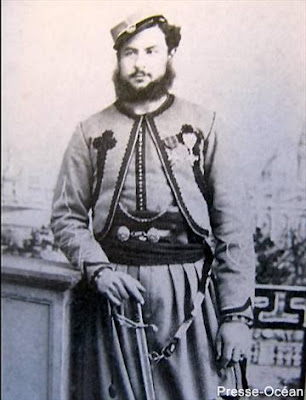Defensor Fidei
Everyone knows that Henry VIII was granted the title 'Defender of the Faith' by the Pope a few years before he split with Rome, since he had proved to be an eloquent opponent of Luther in his Assertio Septem Sacramentorum (penned with the help of St John Fisher).
I recently came across an account of King James II, then in exile, visiting La Trappe and sitting in the sanctuary during High Mass on 25 November 1690. 'At the beginning of the Gospel,' writes Ailbe J. Luddy, O.Cist in The Real De Rance (Dublin 1931), 'he unsheathed his sword and held it aloft in his right hand until the deacon had finished: this was the custom of the English Sovereigns since the time when Henry VIII received from the Pope the title Defensor Fidei. He received Holy Communion, kneeling on the second step of the altar, and heard a low Mass in thanksgiving.'
I must confess I had never heard of this custom before. Did Henry VIII wield a sword during solemn Masses before the Reformation or was it a tradition created by James II? Can anybody enlighten me?
Incidentally, Fisher Press has just published a new edition of the King's Assertio Septem Sacramentorum, with an introduction by historian Richard Rex (Reader in Reformation History at Queen's College, Cambridge):
I recently came across an account of King James II, then in exile, visiting La Trappe and sitting in the sanctuary during High Mass on 25 November 1690. 'At the beginning of the Gospel,' writes Ailbe J. Luddy, O.Cist in The Real De Rance (Dublin 1931), 'he unsheathed his sword and held it aloft in his right hand until the deacon had finished: this was the custom of the English Sovereigns since the time when Henry VIII received from the Pope the title Defensor Fidei. He received Holy Communion, kneeling on the second step of the altar, and heard a low Mass in thanksgiving.'
I must confess I had never heard of this custom before. Did Henry VIII wield a sword during solemn Masses before the Reformation or was it a tradition created by James II? Can anybody enlighten me?
Incidentally, Fisher Press has just published a new edition of the King's Assertio Septem Sacramentorum, with an introduction by historian Richard Rex (Reader in Reformation History at Queen's College, Cambridge):





